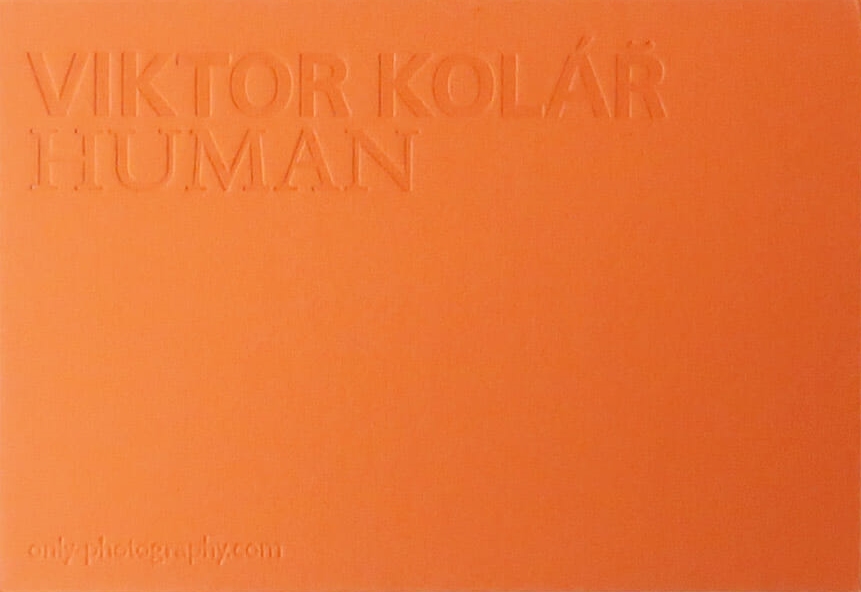Viktor Kolář
I’ve sent the following questions by mail on february 1st to Viktor Kolar, I did receive his answers the same day.
1. Has there been a famous photographer at the beginning of your career who did impress you with his books and/or images?
For a young photographer as me there was one great man with the camera to admire : Henri Cartier-Bresson . Why ? He introduced a kind of photography that was easy to be understood by a gang of young people with small cameras who were literally in love with life on the streets in their native towns, and mine was Ostrava – dark, mining city ...
He made us believe with his pictures that we can follow the same pattern he used and in such way we become photographers like him. It took us long time to understand that must overcome first many problems – face many challenges and yet may not succeed in this creative trial. ..
Later on I had a great respect for Bruce Davidson and his treatment of social issues by his photos in the US in the 60s and 70s..
Robert Frank was important for me when I emigrated to Canada in 1968. His essay on Americans with 83 images endured the time test quite well, his pics posess the strengh even now when we live in postmodern times and trends are quickly changing in the world of visual arts.
2. Was it difficult for you photographing on the street, to approach the people, especially during the communist regime?
Photographing in the streets during communist régime was not too difficult when you had a vision to follow. Of course there was always operating "secret police" in the streets and so the basic rule was to use camera in a semi-secretive way which means to avoid using camera in the streets in open manner. Use public celebrations as May 1st or Day of Coalminers to produce your pictures of people, very often you could say that you do pictures for camera-club exhibitions – as Diane Arbus did in NYC – they took my camera Leica M4 for russian Zorkij.
To be very honest, people do not enjoy being photographed in general, you very often do many strange things to get your pictures on the film especially when you are young and ambitious. What matters after all is this: you operate within a very limited area – I mean physically – within these limits you produce a strong personal testimony in images. HCB mentioned that most difficult is to photograph in your neighborhood...
I had many problems with photographing in the public but tried hard to solve them ... My personal philosophy is to produce photos in a long run, so I consider myself as the long distance runner...
3. What have been the reasons for your return from Canada to Ostrava?
My main reason why I returned home from Canada – after 5 years and knowing that back home is a an orthodox communist régime – was the following: I developed a strong concept of "inner freedom" while living in Canada learning the hard way in solitude. Out of this I could anticipate quite well what I am going to face my native country. Also I endured two difficult personal periods in Canada doing the manual works for 6 and 5 months. One was in Molybnenite mine in British Columbia and the second was in Thompson City in Nickel processing factory.
Back home I could work in steel works on three shifts and in between do my photography... also I looked for my future woman and mother of my kids.
The conclusion: After 5 years of exile I learned my life-lesson and with this aquired experience I could survive the communist regime in my country...with my sharp eye vision I could photograph things - situations domestic man with the camera could not see at all. If I wouldn’t have returned home, I wouldn’t been able to produce the body of work which I assembled so far.
4. Can you briefly describe the cornerstones of you teaching at FAMU?
My main subject in teaching at FAMU - Photography department was " documentary photography". My way of teaching was leading descisions at seminars introducing to my students my way of understanding documentary orientation which is the most difficult subject – dealing with life itself. We were analysing pictures brought by students or I usually brought laser copies of images from important photographers working in the realms of personal documentary photography. Also we discussed problems of integrity, truthfulness of photography as a medium, also the issue of electronic alteration of photographs used in our times. I published a script in 2000 at FAMU publishing house "Seminars of Documentary Photography" where chapters are dealing with various subjects.
Over the years I gathered a great deal of material that I used for my students during seminars or in my Studio of Documentary photography.
In recent years there is visible a split in documentary oriented work , postmodern times do not seem to have a great respect for classical documentary orientation, they try to introduce they own documentary practices which are often based on digital photography, usage of internet and digital printing... the issue is vast and my task is to teach what I believe in myself and what has value to me.
Mein besonderer Dank gilt der Leiterin der Fotografischen Sammlung des Sprengel Museums Hannover Inka Schube, die den ersten persönlichen Kontakt zwischen Viktor Kolár und mir hergestellt hat und dem Künstler eine längst überfallige Ausstellung im Musum ausrichtet. Und natürlich Viktor Kolár selbst, der mir nicht allein durch seine Bilder sondern vor allem durch seine Menschlichkeit meine Bewunderung und Zuneigung gewonnen hat.

